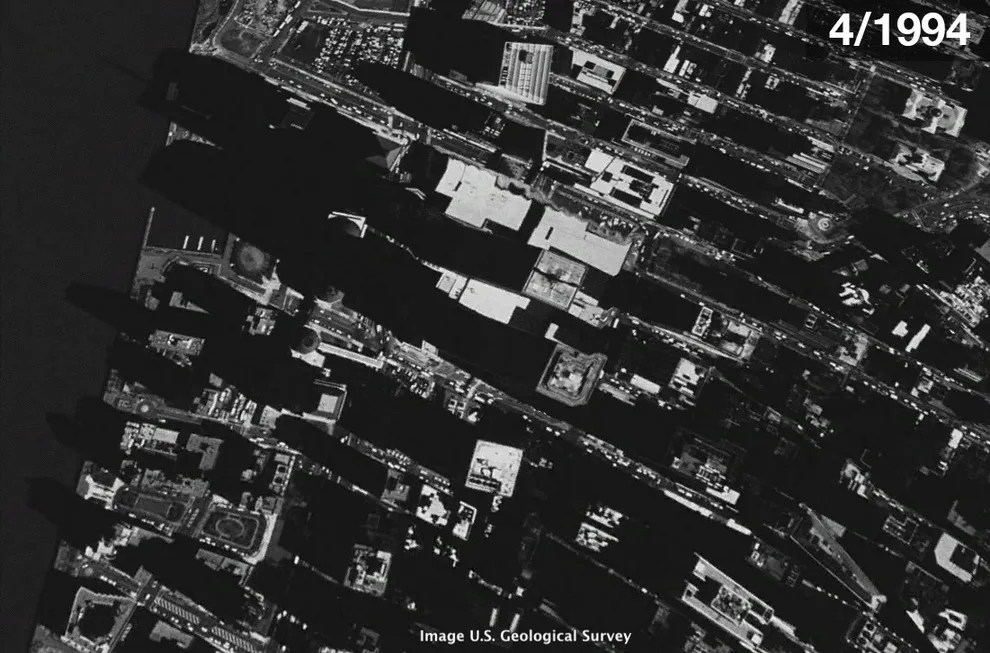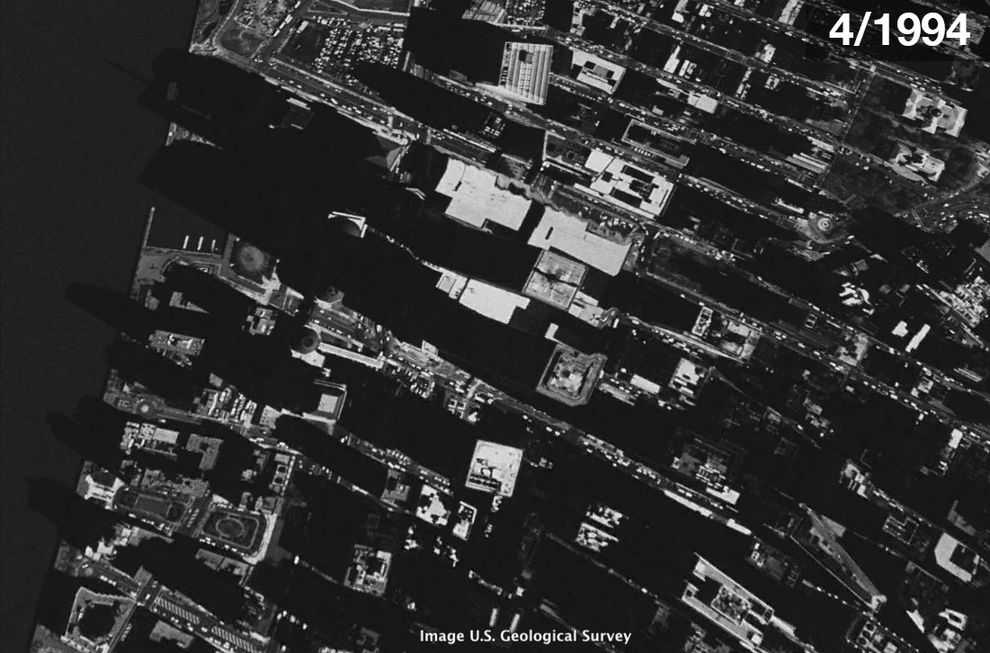
This satellite-based visualization shows rebuilding Downtown NY after 9/11
On September 11, 2001 the world had changed. 19 terrorists from al-Qaeda, hijacked
four commercial airplanes, deliberately crashing two of the planes into the World Trade Center towers and a third plane into the Pentagon in Arlington, Va. The Twin Towers
ultimately collapsed because of the damage sustained from the impacts and the
resulting fires. After learning about the other attacks, passengers on the fourth
hijacked plane, Flight 93, fought back, and the plane was crashed into an empty field in western Pennsylvania about 20 minutes by air from Washington, DC. The attacks killed nearly 3,000 people from 93 nations. 2,753 people were killed in New
York, 184 people were killed at the Pentagon and 40 people were killed on Flight 93.
Cleanup of the Ground Zero site took nearly a year. The rebuild process took another 14 years. We’ve decided to check how the history of World Trade Centre site looks like from the sky. The first available satellite images of the site come from 1994 and 1997 where you can still see The Twin Towers. Next image dates back to September 11, 2001 just after the towers collapsed. Than we can see the long process of rebuilding the site with the last image dating September 2015.

Satellite-based visualization: Rebuilding NY after 9/11
The world should never forget about this tragedy!
How this satellite-based visualization was created? All the images are screenshots from Google Earth.
Did you like this post? Read more and subscribe to our monthly newsletter!





